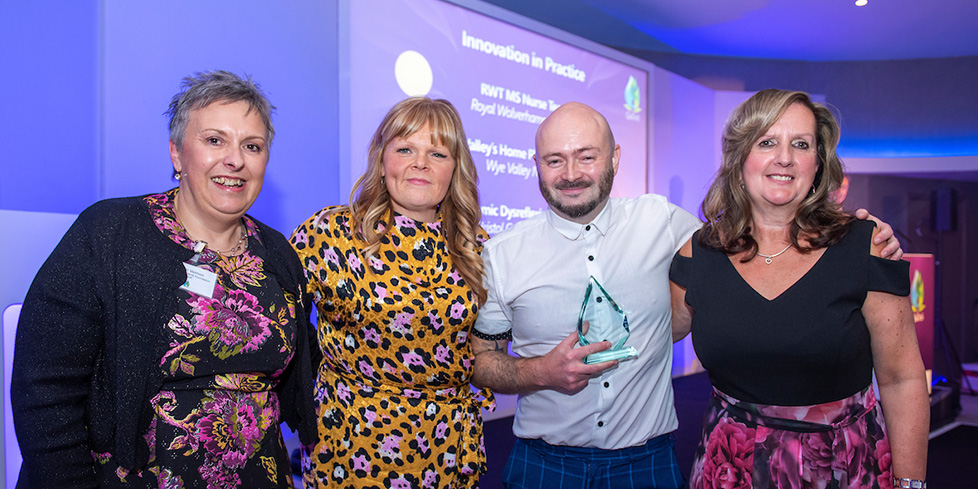A group approach to pathways – how processes meant prizes at QuDoS
From redesigning relapse management to implementing new ways to prevent pressure ulcers, the Royal Wolverhampton Trust (RWT) MS Nurse Team is on a mission to provide the best possible care.
‘Teamwork to make the dream work’ is a cheesy slogan, but it’s one the RWT MS team have taken to a whole new level.
Dan Kucharczyk and Gail Shore took the Innovation in Practice category at the 2019 QuDoS in MS event in recognition of how they have worked with other healthcare teams to redesign services and improve care.
“We want to provide equitable, timely care by working innovatively and in collaboration with as many people as possible, because time is at bit of a premium for all of us.
“It’s about finding areas where there might be bottlenecks or issues with accessing services, looking at better ways of doing things, and then transferring that directly into processes,” said Dan.
So far, they have worked with a team of community nurses to significantly speed up relapse treatment, and with speech and language colleagues on a dysphagia pathway.
But the pair have many more collaborative ideas in the bank, such as working with AMU to by-pass the A&E route to admission, and with tissue viability nurses on a pressure ulcer prevention plan.
Process geek
Dan, a self-confessed “process geek”, said he had been desperate to build his protocol folder since he started in 2014. It was only when Gail joined him, about three years later, that he was able to put his plans into action.
“I come from a ward manager’s background, where there’s a policy for everything,” he said.
“I had lots of ideas and had lots of half-started projects, but I was working on my own, the caseload was getting bigger and there was no time. Since Gail came, from having two of us, we’ve been able to deliver on some of those things.”
It’s made a huge difference, said Gail, who was a lymphedema specialist nurse before joining the RWT MS Nurse Team.
“We do everything, from diagnosis to end-of-life and disease modifying drug education, and then you have the reviews and the home visits. Everything was a bit messy, so we really wanted to redesign the whole service and create something that flowed better.
“Having it all mapped out and written down means you can audit what you are doing and make sure it’s replicable – that every patient having a relapse, for example, gets the same service,” said Gail.
Accolade winning project
It was Dan and Gail’s collaborative approach, as demonstrated by their relapse management pathway, that caught the eyes of the QuDoS judges.
To speed up access to care, they made links with a local community-based group of advanced district nurses, called the Rapid Intervention Team (RIT).
“Before, if a patient thought they were having a relapse, they would call the service here and we’d ask them to take a urine sample to their GP. We would often need to send a bottle to them or get someone to come pick one up and it might be a week before that sample got to the GP.
“By that point we’ve lost 10 days and we still don’t know if there is a urine infection,” said Dan.
Now, the patient calls the team and the MS coordinator asks them a number of initial questions.
“If we think there might be an infection, we refer them to the RIT. They go to the patient, normally within four hours. If they collect samples, it means we can have the result the next day.”
Joint working
While coordinating with other healthcare teams has its fair share of logistical challenges, Dan and Gail highly recommended it.
“I’d advise people to find out and use whatever services they have available to them in their trust,” said Gail.
“We’d never thought of working with the RIT before, but now we use them all the time. It frees up such a massive chunk of our time and improves the quality of care we provide.”
Dan added that every team they had approached in their service redesign quest had been keen to get involved.
“They always say ‘oh, yes, that’d be great’, so unless we have just been really lucky, I think there really is a will to do joint working. You have to remember that it looks good for their services, too,” he said.
- In a bid to share best practice, Dan and Gail are happy to share their pathways with colleagues who wish to adapt them to their own services. Email rwh-tr.msnurses@nhs.net
